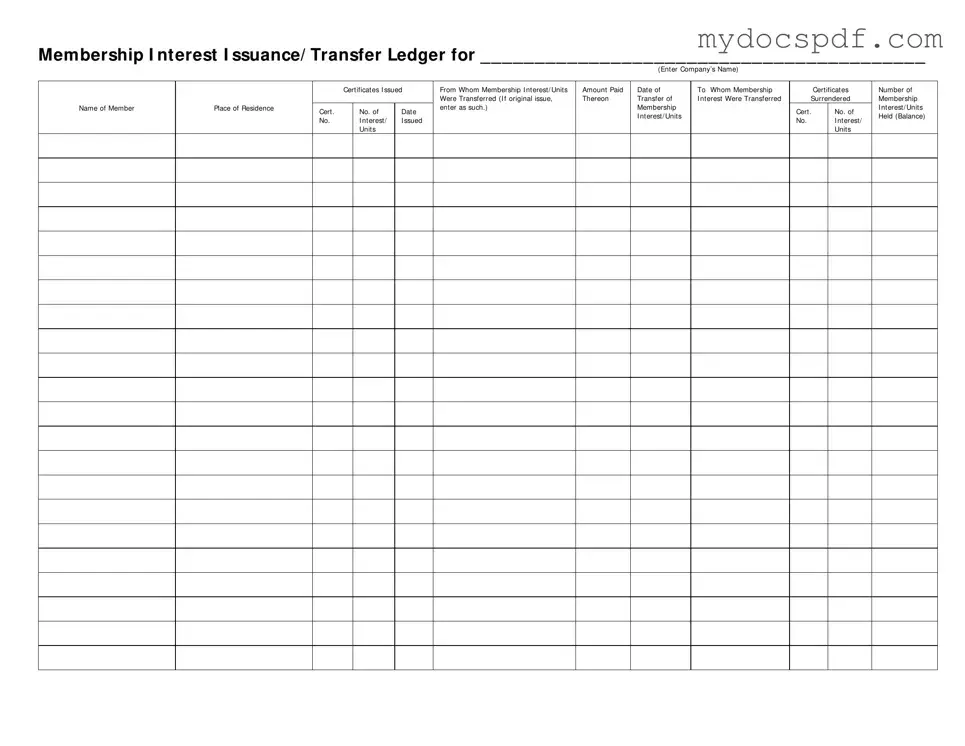Get Membership Ledger Form in PDF
The Membership Ledger form serves as a crucial record for tracking the issuance and transfer of membership interests within a company. It captures essential details such as the name of the company, certificates issued, and the parties involved in each transaction. By maintaining an accurate ledger, organizations can ensure transparency and accountability in their membership dealings.
Access Editor Here

